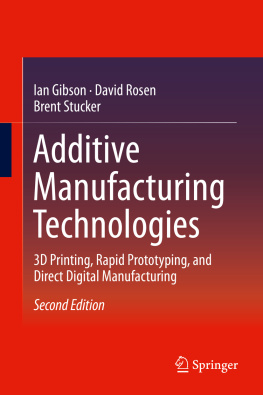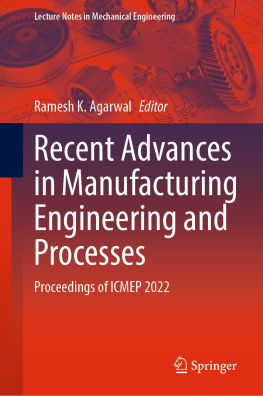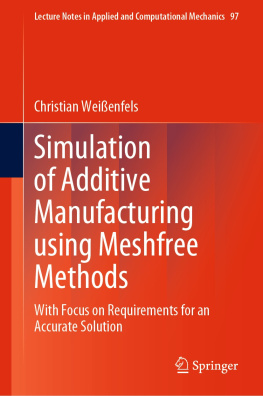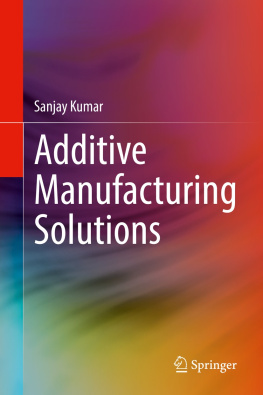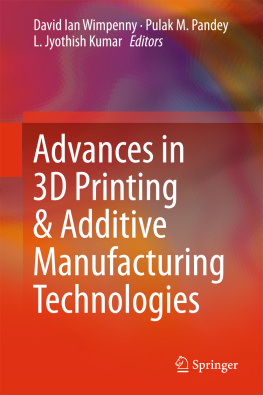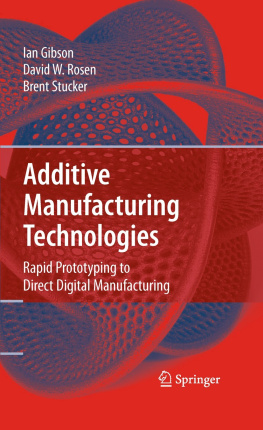1.1 What Is Additive Manufacturing?
Additive manufacturing is the formalized term for what used to be called rapid prototyping and what is popularly called 3D Printing. The term rapid prototyping (RP) is used in a variety of industries to describe a process for rapidly creating a system or part representation before final release or commercialization. In other words, the emphasis is on creating something quickly and that the output is a prototype or basis model from which further models and eventually the final product will be derived. Management consultants and software engineers both also use the term rapid prototyping to describe a process of developing business and software solutions in a piecewise fashion that allows clients and other stakeholders to test ideas and provide feedback during the development process. In a product development context, the term rapid prototyping was used widely to describe technologies which created physical prototypes directly from digital model data. This text is about these latter technologies, first developed for prototyping, but now used for many more purposes.
Users of RP technology have come to realize that this term is inadequate and in particular does not effectively describe more recent applications of the technology. Improvements in the quality of the output from these machines have meant that there is often a much closer link to the final product. Many parts are in fact now directly manufactured in these machines, so it is not possible for us to label them as prototypes. The term rapid prototyping also overlooks the basic principle of these technologies in that they all fabricate parts using an additive approach. A recently formed Technical Committee within ASTM International agreed that new terminology should be adopted. While this is still under debate, recently adopted ASTM consensus standards now use the term additive manufacturing [].
Referred to in short as AM, the basic principle of this technology is that a model, initially generated using a three-dimensional Computer-Aided Design (3D CAD) system, can be fabricated directly without the need for process planning. Although this is not in reality as simple as it first sounds, AM technology certainly significantly simplifies the process of producing complex 3D objects directly from CAD data. Other manufacturing processes require a careful and detailed analysis of the part geometry to determine things like the order in which different features can be fabricated, what tools and processes must be used, and what additional fixtures may be required to complete the part. In contrast, AM needs only some basic dimensional details and a small amount of understanding as to how the AM machine works and the materials that are used to build the part.
The key to how AM works is that parts are made by adding material in layers; each layer is a thin cross-section of the part derived from the original CAD data. Obviously in the physical world, each layer must have a finite thickness to it and so the resulting part will be an approximation of the original data, as illustrated by Fig.. The thinner each layer is, the closer the final part will be to the original. All commercialized AM machines to date use a layer-based approach, and the major ways that they differ are in the materials that can be used, how the layers are created, and how the layers are bonded to each other. Such differences will determine factors like the accuracy of the final part plus its material properties and mechanical properties. They will also determine factors like how quickly the part can be made, how much post-processing is required, the size of the AM machine used, and the overall cost of the machine and process.
Fig. 1.1
CAD image of a teacup with further images showing the effects of building using different layer thicknesses
This chapter will introduce the basic concepts of additive manufacturing and describe a generic AM process from design to application. It will go on to discuss the implications of AM on design and manufacturing and attempt to help in understanding how it has changed the entire product development process. Since AM is an increasingly important tool for product development, the chapter ends with a discussion of some related tools in the product development process.
1.2 What Are AM Parts Used for?
Throughout this book you will find a wide variety of applications for AM. You will also realize that the number of applications is increasing as the processes develop and improve. Initially, AM was used specifically to create visualization models for products as they were being developed. It is widely known that models can be much more helpful than drawings or renderings in fully understanding the intent of the designer when presenting the conceptual design. While drawings are quicker and easier to create, models are nearly always required in the end to fully validate the design.
Following this initial purpose of simple model making, AM technology has developed over time as materials, accuracy, and the overall quality of the output improved. Models were quickly employed to supply information about what is known as the 3 Fs of Form, Fit, and Function. The initial models were used to help fully appreciate the shape and general purpose of a design (Form). Improved accuracy in the process meant that components were capable of being built to the tolerances required for assembly purposes (Fit). Improved material properties meant that parts could be properly handled so that they could be assessed according to how they would eventually work (Function).
To say that AM technology is only useful for making models, though, would be inaccurate and undervaluing the technology. AM, when used in conjunction with other technologies to form process chains, can be used to significantly shorten product development times and costs. More recently, some of these technologies have been developed to the extent that the output is suitable for end use. This explains why the terminology has essentially evolved from rapid prototyping to additive manufacturing. Furthermore, use of high-power laser technology has meant that parts can now also be directly made in a variety of metals, thus extending the application range even further.


